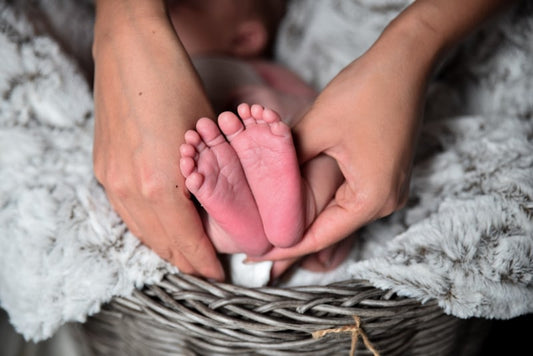Mixing breast milk from different days is a common question among breastfeeding mothers. Some mothers may want to combine their breast milk to ensure that their baby gets enough milk when they are away from them. However, there are also concerns about the safety of mixing breast milk from different days.
Breast milk is a complex and dynamic fluid that changes over time. It contains a variety of nutrients, hormones, and immune factors that can vary depending on the mother's diet, health status, and the baby's age. Mixing breast milk from different days can alter the composition of the milk, making it less nutritious for the baby. Additionally, if the milk is not stored properly, it can become contaminated with bacteria or other harmful pathogens.
However, some experts suggest that it is safe to mix breast milk from different days as long as it is done correctly. According to the Centers for Disease Control and Prevention (CDC), breast milk can be stored in the refrigerator for up to four days, and in the freezer for up to six months. If a mother wants to mix breast milk from different days, she should first cool the fresh milk in the refrigerator, and then combine it with the older milk before freezing it again. It is important to label the container with the date of the oldest milk to ensure that it is used within the recommended storage time.
Understanding Breast Milk Storage
Breast milk is a valuable source of nutrition for newborns and infants, and it is important to store it correctly to ensure its safety and quality. Here are some key factors to consider when storing breast milk.
Breast Milk Storage Guidelines
The Academy of Breastfeeding Medicine and the Centers for Disease Control and Prevention (CDC) offer guidelines for storing breast milk. According to these guidelines, freshly expressed breast milk can be stored in a clean container in the back of the refrigerator for up to four days. However, it is best to use or freeze the milk within three days.
For longer storage, breast milk can be frozen. In a freezer compartment inside a refrigerator, breast milk can be stored for up to two weeks. In a separate freezer that is attached to a refrigerator and is at zero degrees Fahrenheit, breast milk can be stored for up to six months. In a deep freezer at -4 degrees Fahrenheit, breast milk can be stored for up to 12 months.
The Importance of Temperature Regulation
Temperature regulation is crucial when storing breast milk. The refrigerator should be set at 40 degrees Fahrenheit or below, and the freezer should be set at 0 degrees Fahrenheit or below. If breast milk is stored at a higher temperature, it can spoil more quickly, which can lead to bacterial growth and contamination.
It is also important to avoid rapid temperature changes, such as placing hot breast milk in the refrigerator or freezer. This can cause the temperature to rise, which can lead to the growth of bacteria.
Container Selection for Breast Milk
The container used to store breast milk should be clean and sterile. Glass or hard plastic containers with tight-fitting lids are good choices. Breast milk can also be stored in plastic bags specifically designed for breast milk storage.
It is important to label the container with the date and time the breast milk was expressed. This can help ensure that the oldest milk is used first and can also help track how long the milk has been stored.
In conclusion, proper storage of breast milk is essential to maintain its safety and quality. Following the guidelines provided by the Academy of Breastfeeding Medicine and the CDC, regulating temperature, and selecting appropriate containers can help ensure that breast milk is stored safely and effectively.
Safe Practices for Combining Breast Milk
When it comes to combining breast milk from different days, there are a few safe practices that should be followed to ensure the milk remains safe for the baby to consume.
Combining Milk from Different Pumping Sessions
It is generally safe to combine breast milk from different pumping sessions as long as the milk is at the same temperature. For example, if you have freshly pumped milk that is still warm, you can combine it with previously pumped milk that has been stored in the refrigerator. However, it is important to note that you should not mix milk that has been pumped at different temperatures, as this can cause bacterial growth.
Preventing Bacterial Growth
One of the most important things to consider when combining breast milk is preventing bacterial growth. To do this, it is important to maintain cleanliness throughout the pumping and storage process. This includes washing your hands before pumping, sterilizing your pump parts, and using clean containers to store the milk.
It is also important to store the milk at the correct temperature. Freshly pumped milk can be stored at room temperature for up to four hours, in the refrigerator for up to four days, and in the freezer for up to six months. However, it is important to note that previously frozen milk should not be refrozen.
In summary, combining breast milk from different days is generally safe as long as the milk is at the same temperature and proper cleanliness and storage practices are followed. By taking these precautions, parents can ensure that their baby is receiving safe and nutritious breast milk.
Feeding and Nutritional Considerations
Breast milk is a valuable source of nutrition for babies as it contains essential nutrients that support their growth and development. However, a common question that many mothers have is whether it is safe to mix breast milk from different days.
Effects on Nutrition When Mixing Milk
According to PN Mag, freshly pumped milk or expressed breast milk is safe for up to four hours at room temperature, and any leftover milk from a bottle needs to be fed to the baby within two hours; otherwise, it should be dumped out, regardless of whether it's fresh breast milk or if it had been stored previously. It is not advisable to mix milk that was pumped on different days.
When breast milk is stored, its nutritional composition may change over time. Exclusive Pumping notes that the fat content of breast milk can vary depending on the time of day and how long it has been since the last feeding. Mixing milk from different days may result in an uneven distribution of nutrients, which can affect the baby's growth and development.
Feeding Mixed Milk to Babies and Toddlers
It is important to note that mixing breast milk from different days may increase the risk of bacterial growth and contamination, which can be harmful to the baby's health. Verywell Family advises against combining breast milk that was pumped on different days.
If a mother needs to mix breast milk from different days, it is recommended to mix milk that was expressed on the same day. Nursing Moms notes that mixing frozen milk with fresher milk is safe as long as both types of milk are not altered, and the milk is warmed up before feeding it to the baby.
In conclusion, while breast milk is a valuable source of nutrition for babies, it is not advisable to mix milk that was pumped on different days. Mixing milk from different days may affect the nutritional composition of the milk and increase the risk of bacterial growth and contamination. Mothers who need to mix breast milk should mix milk that was expressed on the same day or mix frozen milk with fresher milk.
Thawing and Warming Mixed Breast Milk
Breast milk can be safely mixed from different days, but it is important to follow proper thawing and warming techniques to maintain the quality and safety of the milk. Here are some guidelines to follow when thawing and warming mixed breast milk.
Proper Thawing Techniques
When thawing mixed breast milk, it is important to use proper techniques to prevent contamination and maintain the quality of the milk. Here are some tips to follow:
- Thaw breast milk in the refrigerator overnight or under running water.
- Do not thaw breast milk in the microwave as it can heat unevenly and destroy the nutrients in the milk.
- Do not refreeze thawed breast milk.
Warming Milk to the Ideal Temperature
Once mixed breast milk has been thawed, it needs to be warmed to the ideal temperature for feeding. Here are some tips to follow:
- Warm refrigerated breast milk by placing it in a bowl of warm water or using a bottle warmer.
- Do not warm breast milk in the microwave as it can overheat the milk and destroy the nutrients.
- Test the temperature of the milk by placing a few drops on the inside of your wrist. It should feel warm, not hot.
- Use the warmed breast milk within 2 hours and do not refreeze.
By following these guidelines, parents can safely thaw and warm mixed breast milk for their babies. It is important to remember to always handle breast milk with clean hands and to store it properly to maintain its quality and safety.
Labeling and Organizing Breast Milk
Breast milk is a precious commodity for nursing mothers and their babies. It is important to handle and store breast milk properly to ensure that it is safe for the baby to consume. One of the key aspects of storing breast milk is labeling and organizing it correctly.
Date Labeling and First-In, First-Out Method
It is important to label breast milk with the date it was expressed. This helps to ensure that the oldest milk is used first, following the first-in, first-out method. This method ensures that the milk that is closest to expiration is used first, reducing the risk of wasting any milk.
When labeling breast milk, it is important to use a waterproof and permanent marker to write the date on the container. If using bags, it is recommended to write the date on the bag before filling it with milk.
Storing Milk from Different Days
Nursing mothers may wonder if they can mix breast milk from different days. According to Verywell Family, it is safe to mix breast milk from different days as long as the milk is stored at the same temperature. For example, fresh milk that has been refrigerated can be combined with other refrigerated milk from the same day. However, it is not recommended to mix fresh milk with previously frozen milk.
When storing milk from different days, it is important to keep the milk separated by date. This can be done by using separate containers or bags for each day's milk. It is also recommended to store the milk in the back of the refrigerator or freezer, where the temperature is the coldest and most consistent.
In summary, labeling and organizing breast milk correctly is important for ensuring that the milk is safe for the baby to consume. Mothers should label breast milk with the date it was expressed and use the first-in, first-out method to ensure that the oldest milk is used first. When storing milk from different days, it is important to keep the milk separated by date and stored at the same temperature.






